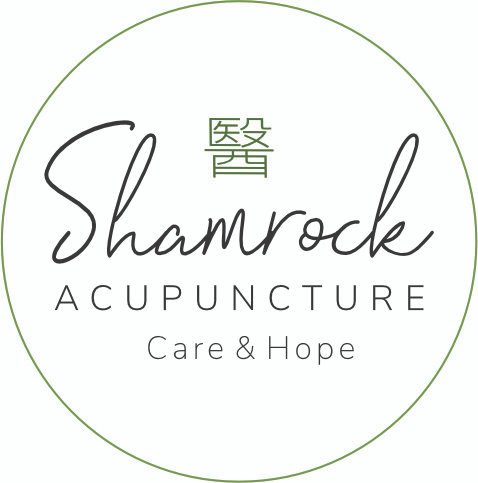Actually, Traditional Chinese Medicine (TCM) beauty treatments are nothing new—many TCM practitioners are familiar with them. After all, when the internal organs are functioning well and there’s sufficient water and blood, a person naturally looks youthful and attractive.
TCM beauty can generally be divided into two main approaches. The first focuses on using acupuncture to reduce wrinkles, lift the face, and slim down localized or overall body fat. The second focuses on regulating the body to improve complexion, reduce puffiness, firm muscles, and enhance overall health, resulting in a naturally youthful and beautiful appearance.
Let’s first discuss the first approach. How does acupuncture reduce wrinkles, lift the face, and burn fat? This approach can be further divided into two categories. The first type could be called “Korean-style cosmetic acupuncture.” This method uses thick needles or many needles to disrupt the superficial fascia or fat tissue under the skin. Then, certain techniques are applied to guide the body’s repair process, which alters the appearance. For example, thick needles may be inserted at various angles beneath wrinkles to break up the tissue, and then the area is manually smoothed out. When the tissue regenerates, the wrinkles appear shallower. Or, many needles might be inserted into the abdominal area to simulate a “foreign invasion,” triggering an immune response that indirectly burns local fat—this is also the principle behind “thread embedding” for weight loss.
Strictly speaking, this type of “Korean-style acupuncture beauty” doesn’t follow traditional TCM theory. However, because it tends to show quick results, it’s currently very popular. That said, it doesn’t truly resolve underlying bodily issues—such as facial sagging caused by spleen deficiency—so the problem often returns, requiring repeated treatments.
Moreover, this acupuncture style can lead to subcutaneous or internal scarring, and its effectiveness decreases with repeated procedures. It can also cause localized stiffness. If done frequently on the face, it can result in a Botox-like stiffness and unnatural appearance, which may look worse up close. Of course, this doesn’t mean such techniques should never be used, but both doctors and patients should understand the pros and cons and use them appropriately—when used wisely, they can still be quite effective.
The second type of cosmetic acupuncture is based on TCM meridian and acupoint theory. For example, the acupoint Hegu is linked to tightening the facial muscles. Facial points like Chengqi, Sibai, Dicang, Xiaguan, and Taiyang promote facial water and blood circulation, which helps the face look more firm, rosy, smooth, and refined. Acupoints on the Spleen meridian, such as Yinlingquan, Diji, and Sanyinjiao, have strong effects in strengthening the spleen and removing excess water, thus reducing puffiness and muscle sagging.
However, this “meridian-acupoint” method tests the practitioner’s skill. It’s not as simple as needling wherever wrinkles or fat appear. The effectiveness of cosmetic treatment also depends on the patient’s overall condition. For instance, if a patient has severe leg swelling, that indicates systemic issues. But if the patient only cares about removing eye bags, they might blame the doctor for not fixing that, even if their leg swelling has significantly improved. This is one reason why the Korean-style acupuncture approach has become a popular newcomer, pushing the meridian-based methods aside. Most doctors would rather avoid working hard without being appreciated.
That doesn’t mean the meridian-acupoint acupuncture method is slower or less effective. It all depends on the doctor’s expertise, the patient’s overall health, and the specific beauty concerns being treated. For example, we use methods like needling from Taiyang to Shuai Gu or Dicang to Jiache to treat facial paralysis—and if facial sagging from paralysis can be improved in a week or two, then sagging caused by aging should be no problem at all.
The two acupuncture approaches described above make up the first direction of TCM beauty. The second direction views beauty through the lens of “treating illness”—improving health leads to natural radiance and beauty. For instance, people over 50, regardless of gender, often notice their complexion becoming dull and lacking luster, with sagging cheeks, making them look increasingly like bulldogs. Many don’t realize this until they attend an event, take photos, and then try to pick one to post online—only to find every picture makes them look ten years older than they remembered.
This kind of aging appearance isn’t hard to change. In clinical practice, we’ve helped many patients with similar issues. Most cases involve liver blood deficiency (causing dull skin) and spleen deficiency (leading to muscle laxity and puffiness). Using formulas like Chai Hu for clearing the liver, Si Wu Tang for nourishing the blood, and Bai Zhu and Fu Ling for strengthening the spleen and removing dampness, improvements often come quickly.
Other beauty concerns—such as facial hyperpigmentation, puffy eye bags, saggy upper arms, lower abdominal bulge, drooping buttocks, excessive hair loss, premature graying, and dry, brittle hair—are all manifestations of underlying health problems. Through TCM pattern differentiation and herbal formulas, we can enhance both health and beauty simultaneously, achieving effective and lasting results.
Of course, these can be combined with the two types of acupuncture discussed earlier. By evaluating both the patient’s objective physical condition and subjective beauty goals, we can customize a comprehensive beauty plan that addresses both symptoms and root causes.
